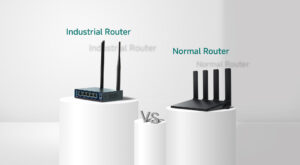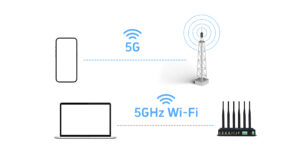As electric vehicles (EVs) gain popularity, the demand for fast, reliable, and scalable charging infrastructure continues to rise. EV charging stations—officially referred to as electric vehicle supply equipment (EVSE)—are the backbone of this infrastructure. But while the number of charging points increases, so do the complexities of managing communication across large, distributed charging systems.
This is where fiber network connectivity comes into play. In this article, we explore how fiber optic communication helps overcome key challenges in EV charging systems and why it’s becoming the preferred choice for operators aiming to build robust, future-ready EV charging networks.
What Are EV Charging Stations and How Do They Communicate?
EV charging stations come in two forms:
- Standalone stations operate independently
- Networked charging stations, which are connected to a centralized platform.
Networked stations offer far more flexibility and intelligence. They allow operators to remotely manage charging schedules, energy loads, user billing, and grid interaction. Data exchange between charging stations, energy storage systems (ESS), the utility grid, and backend control centers is critical to ensure stable power delivery and system efficiency.
But to make all this possible, fast, interference-free communication is essential.
Communication Challenges in EV Charging Systems
1. CAN Bus Distance Limitations
Many EVs and their onboard batteries rely on Controller Area Network (CAN) bus for communication. While CAN is highly reliable for short-range, real-time control, its physical layer is limited by baud rate and cable length.
According to ISO 11898 standards:
- Higher baud rates (e.g., 1 Mbps) drastically reduce the maximum distance.
- This limits how far you can install EV charging points without degrading communication performance.
For large-scale charging networks, especially those spread across campuses, parking garages, or urban environments, this limitation becomes a bottleneck.
2. Long-Distance and Interference-Prone Environments
EV chargers are often located:
- Outdoors, exposed to harsh weather
- In underground garages with limited wireless coverage
- In suburban or industrial zones where chargers are far apart
Some operators try to use wireless connections (Wi-Fi or cellular) to reduce cabling, but interference, signal loss, and latency are common issues—especially in metal-rich or high-traffic environments. That’s why many system integrators are turning to wired fiber optic communication for better reliability and performance.
Why Fiber Optic Networks Are Ideal for EV Charging Systems
1. Long-Distance Communication
Fiber optic cables can transmit data over tens of kilometers without degradation. This makes them ideal for connecting multiple EV charging stations across a wide area to a centralized control system, overcoming CAN bus distance constraints.
2. Immunity to Electromagnetic Interference (EMI)
Unlike copper wiring, fiber is not affected by electromagnetic interference—essential in noisy electrical environments near transformers, substations, or high-voltage EV chargers.
3. High Data Throughput and Low Latency
Fiber supports high-bandwidth data exchange, ensuring real-time communication for load balancing, demand response, and user notifications.
4. Greater Reliability in Harsh Environments
Industrial-grade fiber devices, such as CAN to fiber converters, offer:
- Wide temperature tolerance
- Surge protection
- Rugged enclosures suitable for outdoor cabinets or roadside installations
CAN to Fiber: A Reliable Solution for EV Charging Systems
To bridge the gap between CAN-based communication and fiber optic networks, CAN to fiber converters are used.
COME-STAR CAN to Fiber Optic Converter
- Automatic baud rate detection for easy plug-and-play installation
- Supports CAN transmission up to 1 Mbps and fiber communication over distances up to 100 km
- -40°C to +75°C temperature range, making it suitable for harsh, outdoor conditions
- Equipped with 3 kV isolation and 2 kV surge protection, ensuring safe, uninterrupted operation
- LED indicators for fast troubleshooting (CAN vs. fiber fault detection)
Whether you’re a system integrator deploying chargers across a smart city, or an EVSE manufacturer building a scalable charging architecture, fiber-based communication provides the performance and reliability you need.
Conclusion: Building Smarter, Stronger EV Charging Networks with Fiber
As EV adoption accelerates, so does the need for intelligent and robust charging networks. Fiber optics not only solve the core challenges of long-distance communication and EMI but also future-proof your EV charging infrastructure for smart grid integration and remote management.
Operators investing in CAN to fiber solutions can expect:
- Improved system uptime
- Faster data response
- Better user experiences
- Reduced maintenance and diagnostics time
If you’re looking to build or upgrade an EV charging system, it’s time to consider fiber as your communication backbone.


